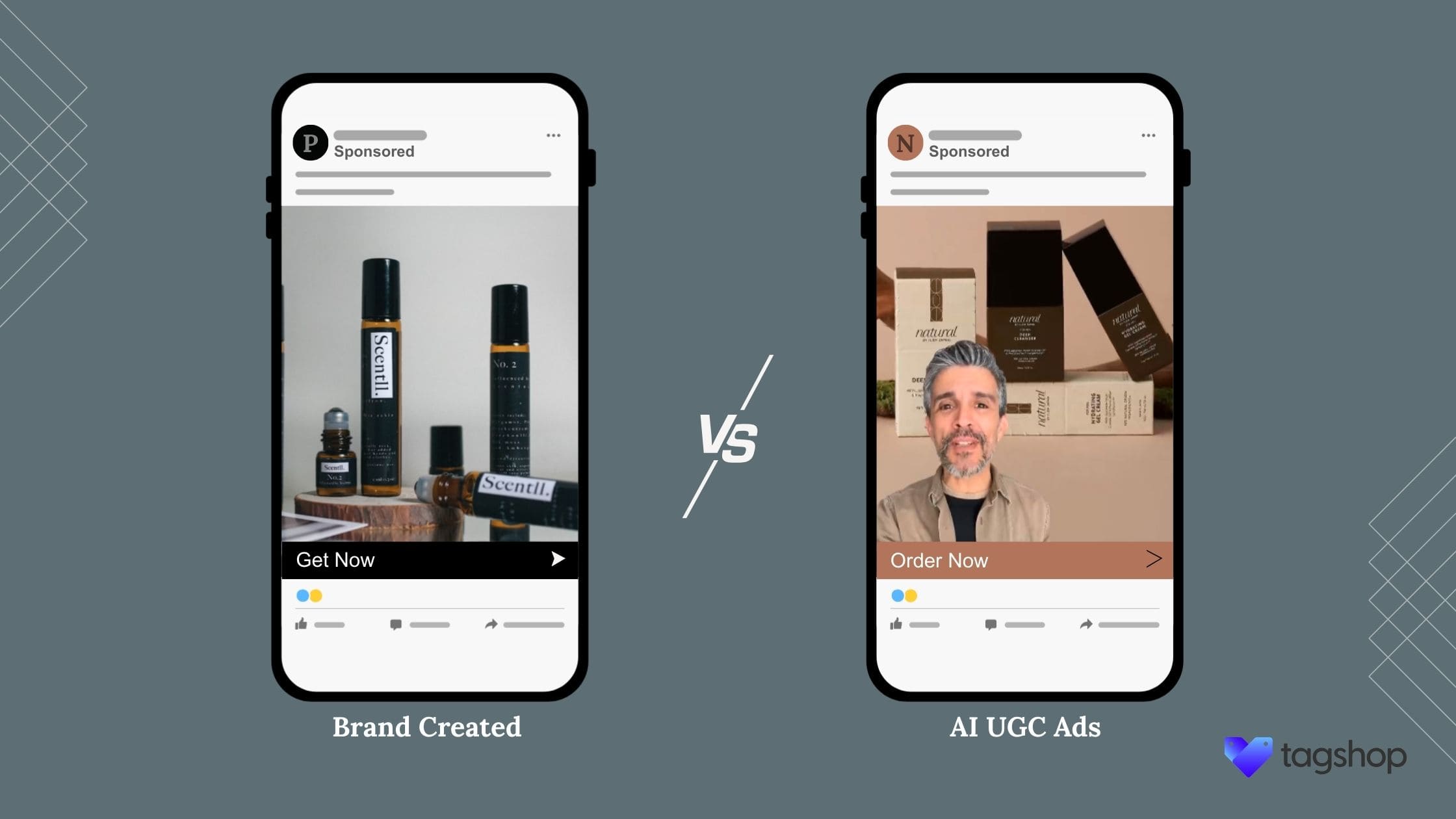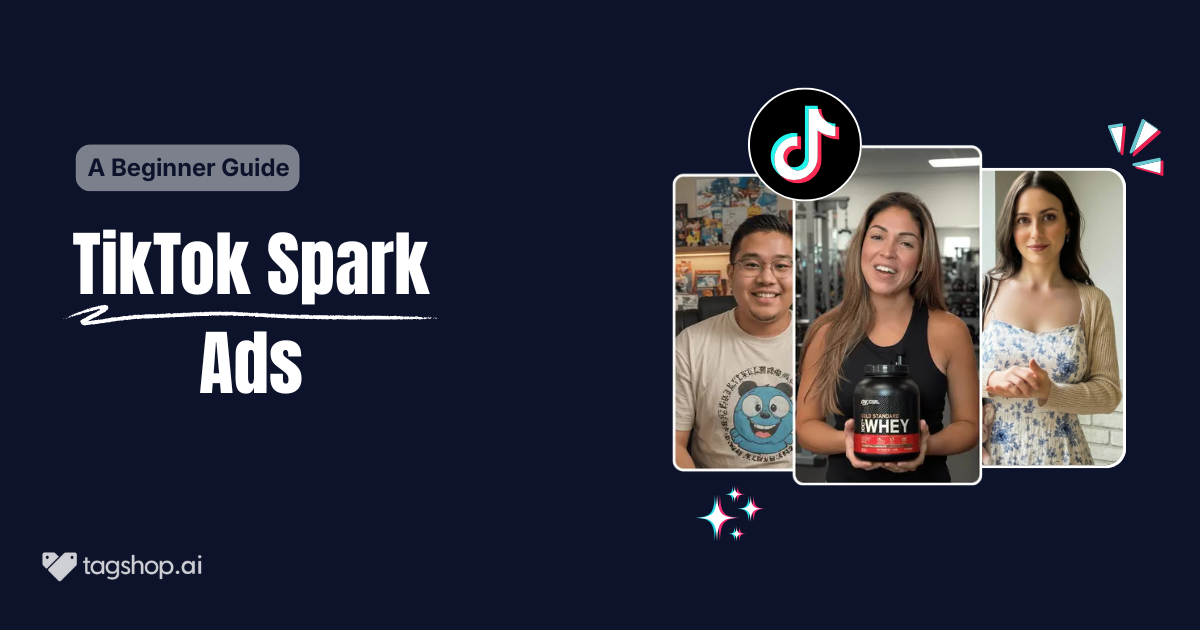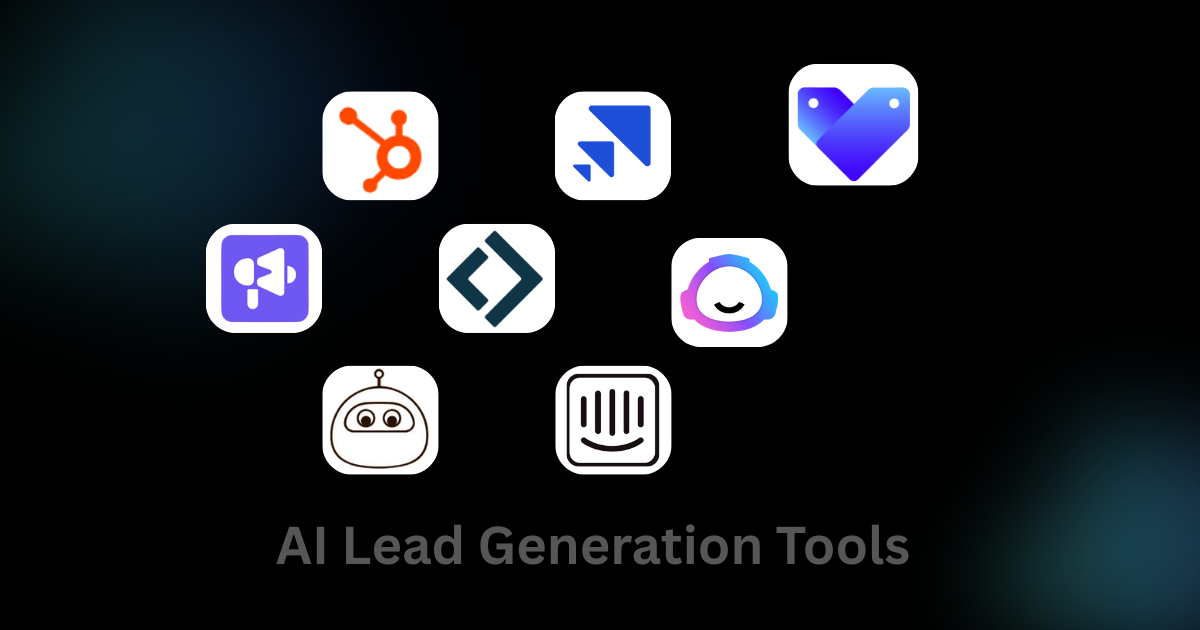Brand Created Ads Vs. AI UGC Ads
Remember that iconic Pepsi commercial with Enrique Iglesias, Beyoncé, Britney Spears, and other megastars? It was a full-blown spectacle – polished, powerful, and unforgettable. Fast forward to today, you’re probably scrolling through your feed and watching someone like you, a regular user, showing off a product in a fun, relatable way.
That’s the magic of AI UGC (User-Generated Content) Ads. Yes! There is a high chance that those realistic-looking ads are created using the best AI avatar generator.
Both styles grab your attention, but they do it in completely different ways. In this blog, we dive into the dynamic world of Brand-Created vs. AI UGC Ads – how they work, what makes them tick, which one connects better with today’s audiences, and what you should choose.
Understanding Brand-Created Video Ads
Brand-created video ads are produced by the brand or in collaboration with hired professionals or agencies. Usually, a team carries out the whole process; hence, we see creative directors, scriptwriters, designers, videographers, and editors associated with a brand video.
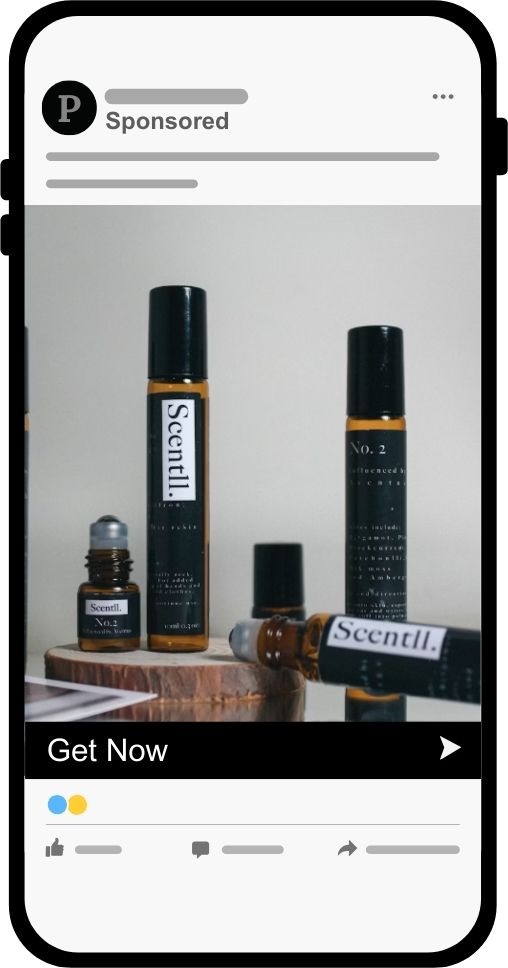
Every element from the lighting and script to the background music and camera angles is deliberately chosen to reflect a specific tone, emotion, and message that aligns with the brand’s image.
These videos aim to control the narrative, ensuring that every second on screen supports the intended perception of the product or service. Think of iconic ads like Pepsi, the one we mentioned at the beginning of the blog.
On similar grounds, you can see brands like Apple, Nike, or Coca-Cola. They make videos to inspire, inform, and imprint on your memory.
Pros of Brand-Created Video Ads
Let’s learn what makes brand-created video ads your best pick.
1. Brand Consistency and Control
One of the biggest advantages is control. You manage how your brand is represented, and present the narrative in he form you want. This helps to build a strong brand identity.
2. Professional and High-Quality Presentation
The visual appeal and crisp execution leave a lasting impression. A well-produced ad can boost credibility, especially in competitive markets where first impressions matter.
3. Ability to Convey Specific Messaging
Brand-created videos allow for deep customization to fit the message you want to convey. Be it iPhone ads highlighting their camera quality or Ford talking about mileage, the video helps in conveying a specific message.
4. Strong Visual Branding
These videos make it easy to integrate logos, colors, typography, and other brand elements consistently, strengthening recall and recognition.
5. Creative and Narrative Control
Brands have complete control over the story being told, from the script and tone to how the brand appears on screen. These videos are made with the mindset that they not only create awareness but also create a sense of want. After looking at the video, audiences surely want to purchase the product.
6. Strategic Targeting
These videos are crafted with a specific demographic or psychographic profile in mind. The content, style, and distribution platform are all tailored to reach and influence a defined audience segment.
Cons of Brand-Created Video Ads
After considering some of the benefits brand-created videos can provide, it is also important to know about the other side of the coin.
1. Can Feel Less Authentic
With their polished finish and scripted delivery, some brand-created videos may appear too “corporate” or detached. Audiences who want to see honest and unfiltered content often get disappointed with such content.
2. Perceived as Salesy
Viewers may skip or ignore the content since the intent is often clear—to sell a product or service. Audiences are more likely to skip such ads if they appear overly promotional.
3. High Production Costs and Timelines
Not every brand can afford such videos. These videos can often prove to be a financial burden. From hiring talent and renting equipment to editing, all can put a great hole in the pocket. Moreover, often there is a cycle of approvals and reshoots, which not only eats up time but also can cost a great fortune.
4. Limited Spontaneit
The controlled environment leaves little room for spontaneity, creativity, or unexpected charm. Audience does crave for some creative content, after all, they are giving you their time, and hence demand creative and fulfilling content. Brands’ videos often fail to deliver that.
5. May Not Resonate With All Audiences
Some demographics, particularly younger audiences, may gravitate toward authenticity and relatability over production value. People can often be misled into thinking that the more polished the ad is, the more costly the product is.
Understanding AI UGC Video Ads
So, what are AI UGC videos? basicallly videos created using AI that look like customers, fans, or product users. Unlike brand ads, these videos are less likely to have a team, as they are created using advanced AI video-generating tools.
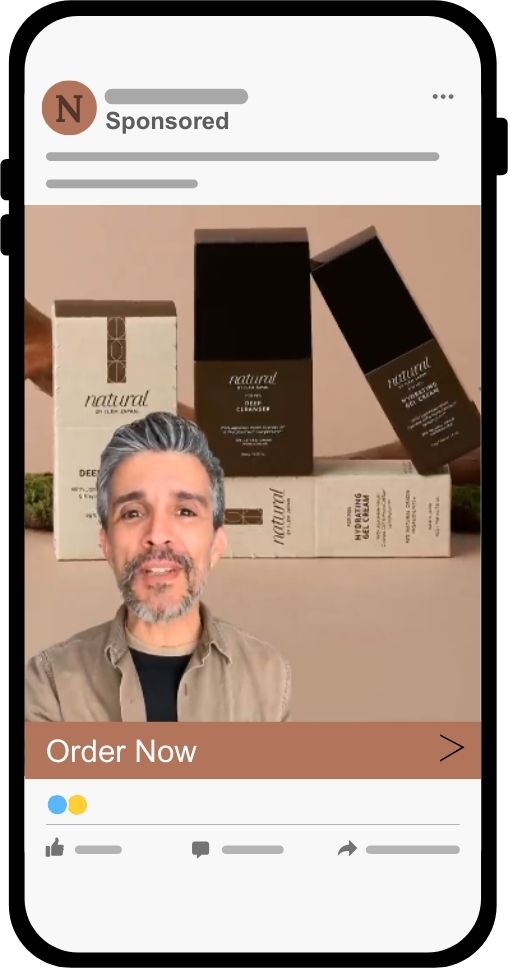
Brands often repurpose these videos to promote their products or services. UGC has exploded in popularity in recent years, particularly with the rise of platforms like TikTok, Instagram Reels, and YouTube Shorts.
With tools like Tagshop, you can create AI UGC ads in minutes.
One of the prime reasons for UGC popularity is how real it looks. You can choose from hyper-realistic avatars that tell real stories, opinions, and experiences, shared by real people, in a much better way. In a world where people are bombarded with advertisements every few minutes, AI UGC ads feel like a breath of fresh air.
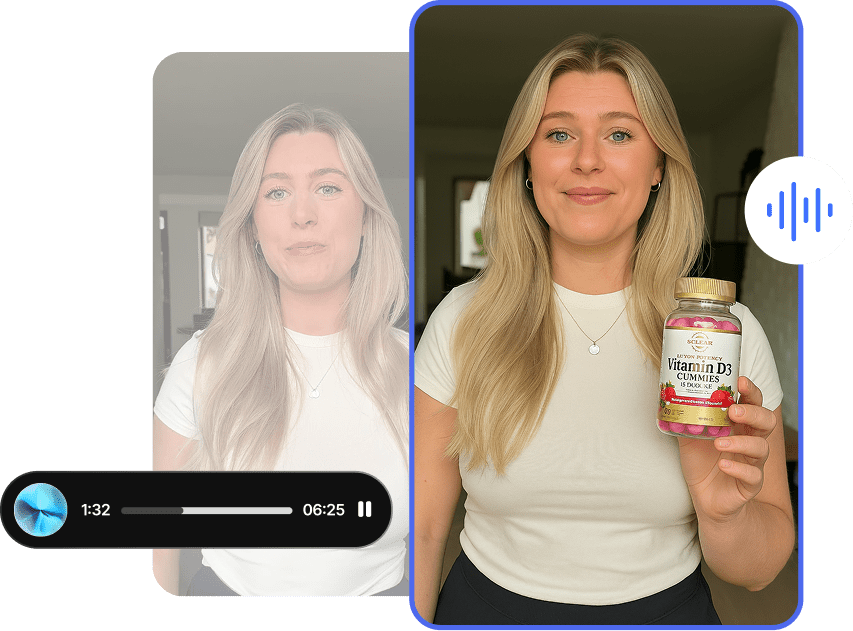
Pros of AI UGC Video Ads
There are various reasons why AI UGC video ads stand out, and here are some of the reasons stated for you.
1. High Levels of Trust and Credibility
88% of consumers trust recommendations from others more than from brands, and AI UGC videos can be cleverly tailored to look like a real customer sharing their experience. They feel less like a sales pitch and more like friendly advice if created properly.
2. Complete Control
When you create a video using AI tools, you have complete control over what message your video delivers. You can choose everything from the script to the outfit og your avatar to get the most out of the video.
3. Increased Authenticity and Relatability
The informal tone, natural language, and real-life settings make the content easier to connect with. With tools like Tagshop, you can choose the tone, background, and the face of your video that best suits your audience.
4. Cost-Effective
Creating an AI UGC video is way cheaper than a brand video. It eliminates the cost of hiring a creator, shooting and editing a video, production, and props, etc., reducing the overall cost by 80%-90%
5. Boosts Conversion Rates
Authentic-looking testimonials and honest reviews help potential buyers make their purchase decision. 79% of people make their purchase decision based on UGC videos.
Cons of UGC Video Ads
1. Requires Active Management and Strategy
You cannot rely entirely on the tool to create the whole video. You need to have a strategy for what kind of content you need and how it would influence the decision of a potential buyer.
Key Differences and Comparisons
Now, we are well aware of each; it’s time to pit them against each other, and look at the key differences between brand-created vs AI UGC video ads
1. Authenticity vs. Polish
Perhaps the most immediate contrast of brand-created vs AI UGC video ads is authenticity and polishing.
- Brand-Created Ads are professionally made and pursue perfection. You will see, in every video, that every frame is designed, and every word is carefully scripted. These ads shine with polished visuals, music, voiceovers, and storytelling.
- AI UGC Ads, on the other hand, are hyper-realistic and hence give out the authentic feel that a customer likes in a video. Viewers can sense when someone is genuinely excited about a product versus when someone is reading a script.
These ads come across as more spontaneous and in casual settings if the right avatar and background are chosen. They feel unscripted and real, which makes them emotionally engaging.
Verdict: Brand-created ads offer professionalism; AI UGC authentic-looking videos. The choice depends on whether you want to impress or relate.
2. Trust and Credibility
Consumers crave honesty and transparency, and they are not out of options
- Brand-created ads are seen as marketing, and consumers know this. While these ads can deliver powerful messages, they may not always be perceived as fully trustworthy because of their obvious commercial intent.
- AI UGC Ads build more credibility, as when people see others like them recommending a product, they’re more likely to trust the message. This makes the process of avatar choosing even more important while creating an AI UGC video ad.
Verdict: UGC often wins this brand-created vs UGC video ad battle, in the trust department, especially for awareness and social proof campaigns.
3. Cost and Resources
Not all brands can spend heavily, hence, cost becomes an important factor for brand-created vs UGC video ads.
- Brand-created ads can be expensive. Brands have to pay for agencies, actors, and directors, to rent equipment and locations. All these costs can touch the sky. It does not end there, there is post-production editing, reshoots, and more that demand significant investment and timelines.
- AI UGC Ads are comparatively cost-effective. Brands can repurpose the same videos on different platforms, as there are tools that can create a single video in different dimensions. It also creates its own script based on the audience and the important keywords.
Verdict: UGC is ideal for brands that aren’t looking to invest much cost in campaigns. Brand-created ads are an investment suited for bigger, long-term goals.
Also Read: What is the Difference Between UGC, AIGC and AI UGC
4. Engagement and Conversion
Which drives more action?
- Brand-created ads are made for brand awareness. They can be beautifully executed, share-worthy, and memorable, but for that, it is important that storytelling is done right.
- AI UGC Ads is a new technology, but it surely has the potential to convert better. An authentic-looking customer avatar saying, “This actually works,” is often the final nudge someone needs before they decide to buy the product.
Verdict: Use brand ads to build recognition; use AI UGC video ads when you want to engage and convert.

When to Use Which Type of Video Ad
It is important to know in this battle of brand-created vs AI UGC video ad, when to use what type of video. Let’s break down some common scenarios and the type of video ad best suited for each.
A. Scenarios Where Brand-Created Ads Might Be Best
There are times when professionalism, polish, and brand control are non-negotiable. Here are situations where brand-created videos are needed.
1. Launching a New Product or Service
Introducing a new offering needs clarity, consistency, and impact. Therefore, it is important to take care of the messaging and tone. Like we mentioned before, in UGC videos, brands can’t control the tone and messaging, and hence it is not advisable under this situation.
2. Building Brand Awareness and Establishing a Specific Image
Think of your brand’s personality. Is it bold, elegant, tech-savvy, or luxurious? You can best express this through a carefully crafted brand ad that reflects tone, colors, values, and visuals that match your identity.
3. Conveying Complex Information or Detailed Product Features
Sometimes brands need to break complex information into simpler terms for audiences to understand. For example, A SaaS company explaining how its new software integrates into existing systems. To convey this complex messaging brand would need a structured and detailed explainer video.
4. Maintaining a Consistent Brand Aesthetic and Messaging
Imagine you have a fashion brand. For a fashion brand to thrive and make its place, it is important for it to have aesthetics. Be it a certain color palette or the way it is shot, brand videos can easily stay uniform it.
5. Targeting a Highly Specific or Professional Audience
C-suite professionals, institutional investors, or enterprise customers often expect professional, clear, and authoritative communication.
UGC videos might fail to deliver that, as not everyone falls under that category. Brand video ads, on the other hand, can maintain that charm in their videos.
B. Scenarios Where AI UGC Video Ads Might Be Best
Then there are moments when authenticity and relatability become your superpowers, and it becomes a deciding factor for brand-created vs UGC video ads. Alongside that, UGC video ads can come to your rescue in:
1. Building Trust and Social Proof
Consumers having such a wide range of options in almost every industry are now not impressed with shiny ads. They get persuasive with real customer loving the product, and you’ve got their attention. This is exactly what AI UGC videos do by creating realistic videos of avatars using your product.
2. Showcasing Product Usage in Real-Life Scenarios
Sometimes, the best way to explain how something works is to just let someone do it. Like, a cooking brand posting a customer-like AI avatar making recipes with their ingredients adds relatability and encourages others to try.
3. Increasing Engagement and Community Building
AI UGC is inherently interactive; it invites other customers to participate and contribute as well. It eventually helps to create a sense of belonging and loyalty. Moreover, it sparks conversations and builds a brand community.
4. Reaching a Younger or More Digitally Native Audience
If you are a regular social media user, you might have realised that millennials and Gen Z don’t just consume content, they create it. And they prefer brands that speak their language. With powerful script writing, you can create an engaging AI UGC video catering to every age group.
5. Boosting Conversions by Leveraging Customer Testimonials
Customer testimonials are gold. Instead of telling people how great you are, let someone who looks like them do it for you. When consumers see someone vouching for your brand, they are likely to make a purchase.
Must Read: What is AI Avatar: Meaning, Benefits, and Generators
Hybrid Approaches
1. Combining Both: Brand Created and AI UGC Video Ads in One Strategy
The fusion of both allows brands to maintain their professional tone and visual identity while also showcasing the authenticity and relatability that AI UGC offers.
Brand videos can be used to introduce products with a clear message and high production quality, while UGC can build trust by showing real customers sharing real experiences.
2. Using AI UGC as a Base for Brand-Created Content
One effective way to bridge the gap between authenticity and professionalism is to use AI UGC as the base and build brand-created content around it.
For example, real testimonials can be converted to AI videos and then incorporated into a branded video with additional graphics, text overlays, or voiceovers.
Best Practices For AI UGC Video Ads
Sourcing high-quality AI UGC starts with giving right prompts to create the perfect script. This script should not only provide information about your product/ service, but also motivate others to create UGC as well. Brands often launch hashtag challenges, social media contests, or community campaigns to do so.
Using AI UGC effectively means creating and curating content that aligns with your brand’s values and aesthetics while preserving its authenticity.
Must Read: Best AI Advertising Examples
Best Practices for Brand-Created Ads
For brand-created videos, planning is key. Start with a clear objective, whether it’s brand awareness, product education, or conversion. All your content revolves around that. Keep your messaging concise and your visual storytelling strong, especially for short-form platforms.
Conclusion
This brings us to the end of the content; We hope you are now well aware and have a clear differentiation when it comes to pitting brand-created vs AI UGC video ads. Surely, each has its advantages and disadvantages, and each has a different purpose. It depends on what your need is and how much you can spend. Surely, a fusion of both can help you to do wonders, but making a clear objective can help you to make a better decision.

